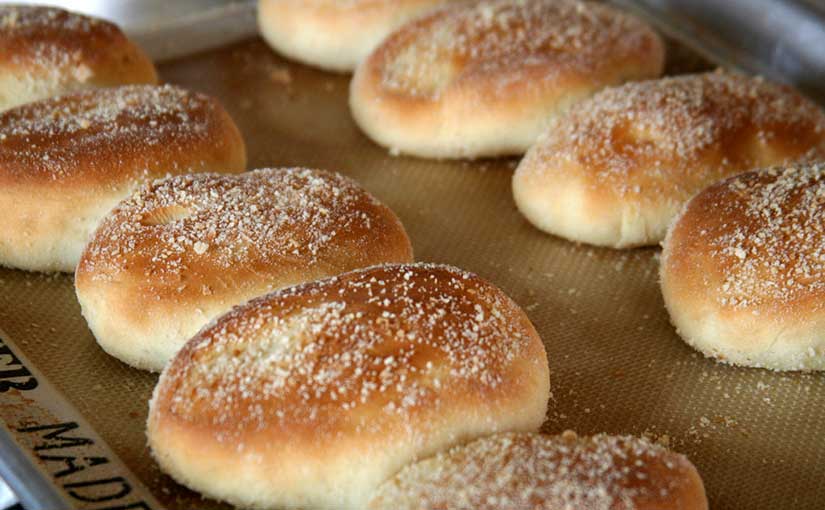Pan de sal. Salt bread, literally. Think of them as delicious little rolls that go with anything. My husband made pulled pork shoulder for an American Fourth of July while we lived in the Philippines, and I realized the pandesal was born to be a slider. It was like they were made for our cross-cultural family extravaganza.
Of course, they weren’t. They were made for the Almighty. The Spanish brought wheat flour to the Philippines because how else can you make a proper Christian host for communion without wheat? Early versions were cooked directly on the oven’s red brick floor, according to food historian Felice Prudente Sta. Maria. This method gave the bun a crisp hard shell.
Americans, though, introduced metal pans in the name of hygiene, it is said, resulting in the softer bun which still dominates today. (They also introduced a reliance on American wheat by eliminating tariffs on US goods coming into the Philippines while still charging tariffs on Philippine goods sent to the States. A good old double-standard, but I digress.) Either way, the original pandesals were larger: 9 to 15 centimeters long, 7 to 9 centimeters wide, and 4 to 6 centimeters thick (according to a source in Sta. Maria’s fantastic book, The Governor-General’s Kitchen).
These days, a typical pandesal is about the size of a fist—or the maximum amount of bread you can stuff in your mouth at one time. I’ve tried. Instead of salty, they also tend toward the sweet, some being made with milk or even condensed milk. (This is similar to a Portuguese sweet bread roll, probably an ancestor or cousin of the pandesal.) Finally, they are rolled around in bread crumbs before baking, which gives it a great texture.
They are lovely for dipping in Spanish tsokolate or coffee or anything you want. They are considered by many as the national bread of the Philippines. When fresh and hot, they are manna from heaven.


